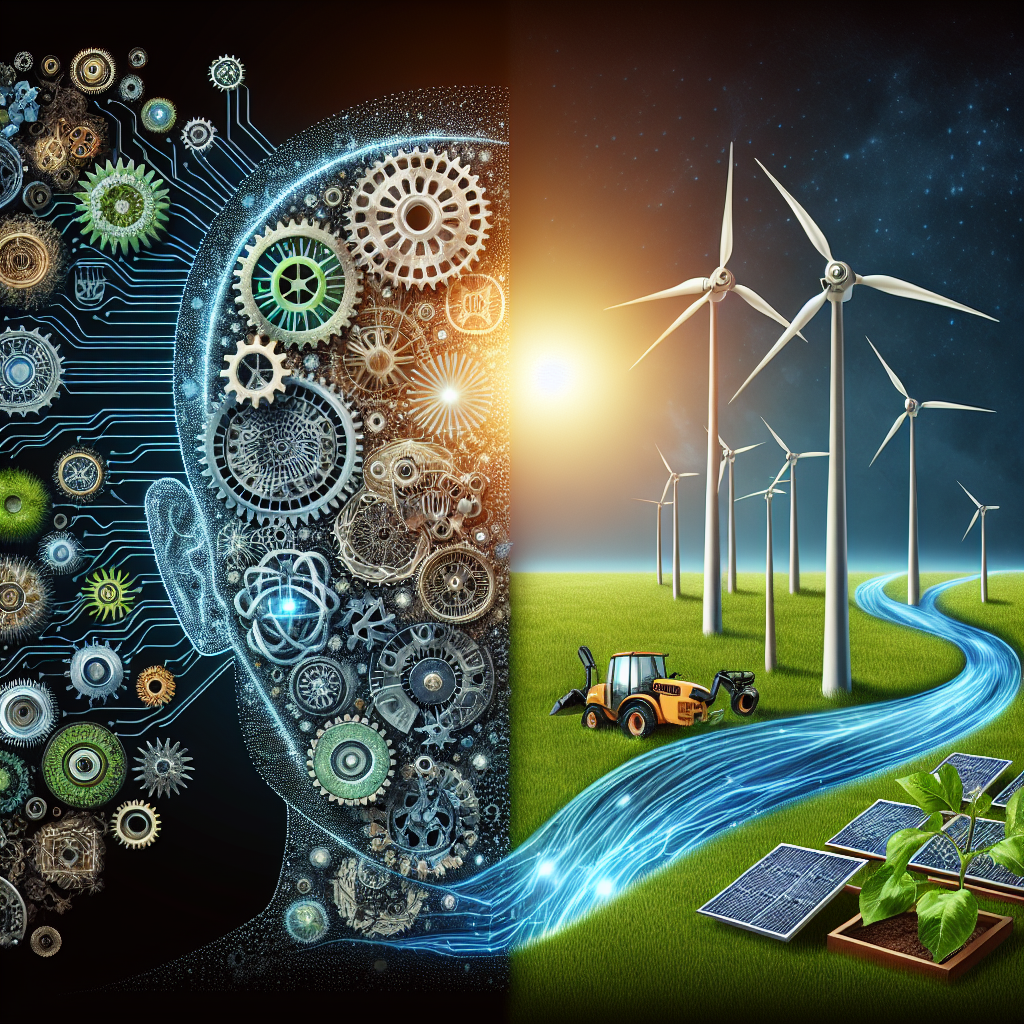The Role of Machine Learning in Advancing Renewable Energy
Introduction
Renewable energy sources, such as solar, wind, and hydroelectric power, have gained significant attention in recent years as viable alternatives to traditional fossil fuels. These sources of energy are seen as more sustainable and environmentally friendly, offering a way to combat climate change and reduce our dependence on finite resources. However, one of the challenges facing the widespread adoption of renewable energy is the variability and intermittency of these sources. This is where machine learning comes in.
Machine learning, a subset of artificial intelligence, has the potential to revolutionize the renewable energy sector by improving the efficiency and reliability of renewable energy systems. By leveraging advanced algorithms and data analytics, machine learning can help optimize energy production, predict energy output, and enhance grid stability. In this article, we will explore the role of machine learning in advancing renewable energy and its potential to accelerate the transition to a cleaner and more sustainable energy future.
Optimizing Energy Production
One of the key benefits of machine learning in the renewable energy sector is its ability to optimize energy production. Renewable energy sources, such as solar and wind, are inherently variable, depending on factors like weather conditions and time of day. Machine learning algorithms can analyze vast amounts of data in real-time to predict energy output and optimize the operation of renewable energy systems.
For example, in the case of solar energy, machine learning algorithms can analyze weather patterns, cloud cover, and other variables to predict solar radiation levels and optimize the positioning of solar panels for maximum energy production. Similarly, in the case of wind energy, machine learning algorithms can analyze wind speed and direction to optimize the positioning of wind turbines and adjust blade angles for optimal energy generation.
By optimizing energy production, machine learning can help renewable energy systems operate more efficiently and reduce the reliance on backup power sources, such as fossil fuels. This can lead to lower energy costs, increased energy independence, and a more sustainable energy supply.
Predicting Energy Output
Another important application of machine learning in renewable energy is predicting energy output. By analyzing historical data and real-time sensor data, machine learning algorithms can forecast energy production and consumption patterns, helping grid operators better manage energy supply and demand.
For example, machine learning algorithms can predict solar and wind energy output based on weather forecasts, historical data, and other variables. This information can be used to optimize energy storage and distribution, ensuring a reliable and stable energy supply. By accurately predicting energy output, machine learning can help reduce energy waste, improve grid efficiency, and enhance grid stability.
Enhancing Grid Stability
Grid stability is a critical factor in the successful integration of renewable energy sources into the existing energy infrastructure. The variability and intermittency of renewable energy sources can pose challenges to grid stability, leading to power outages and grid failures. Machine learning can play a key role in enhancing grid stability by predicting energy demand, optimizing energy production, and managing energy storage.
Machine learning algorithms can analyze data from smart meters, sensors, and other devices to predict energy demand and adjust energy production accordingly. By balancing energy supply and demand in real-time, machine learning can help prevent grid congestion, reduce energy losses, and improve overall grid stability. This can result in a more reliable and resilient energy infrastructure that can better accommodate the growing share of renewable energy sources.
FAQs
Q: How does machine learning improve the efficiency of renewable energy systems?
A: Machine learning algorithms can analyze vast amounts of data to optimize energy production, predict energy output, and enhance grid stability. By leveraging advanced algorithms and data analytics, machine learning can help renewable energy systems operate more efficiently and reduce the reliance on backup power sources.
Q: What are some examples of machine learning applications in renewable energy?
A: Some examples of machine learning applications in renewable energy include predicting energy output, optimizing energy production, and enhancing grid stability. Machine learning algorithms can analyze weather patterns, historical data, and real-time sensor data to forecast energy production, optimize the positioning of solar panels and wind turbines, and balance energy supply and demand in real-time.
Q: How does machine learning contribute to the transition to a cleaner and more sustainable energy future?
A: Machine learning has the potential to accelerate the transition to a cleaner and more sustainable energy future by improving the efficiency and reliability of renewable energy systems. By optimizing energy production, predicting energy output, and enhancing grid stability, machine learning can help reduce energy costs, increase energy independence, and mitigate the impact of climate change.
Conclusion
Machine learning has the potential to revolutionize the renewable energy sector by improving the efficiency and reliability of renewable energy systems. By optimizing energy production, predicting energy output, and enhancing grid stability, machine learning can help accelerate the transition to a cleaner and more sustainable energy future. As the demand for renewable energy continues to grow, the role of machine learning in advancing renewable energy will become increasingly important in shaping the future of energy production and consumption.

